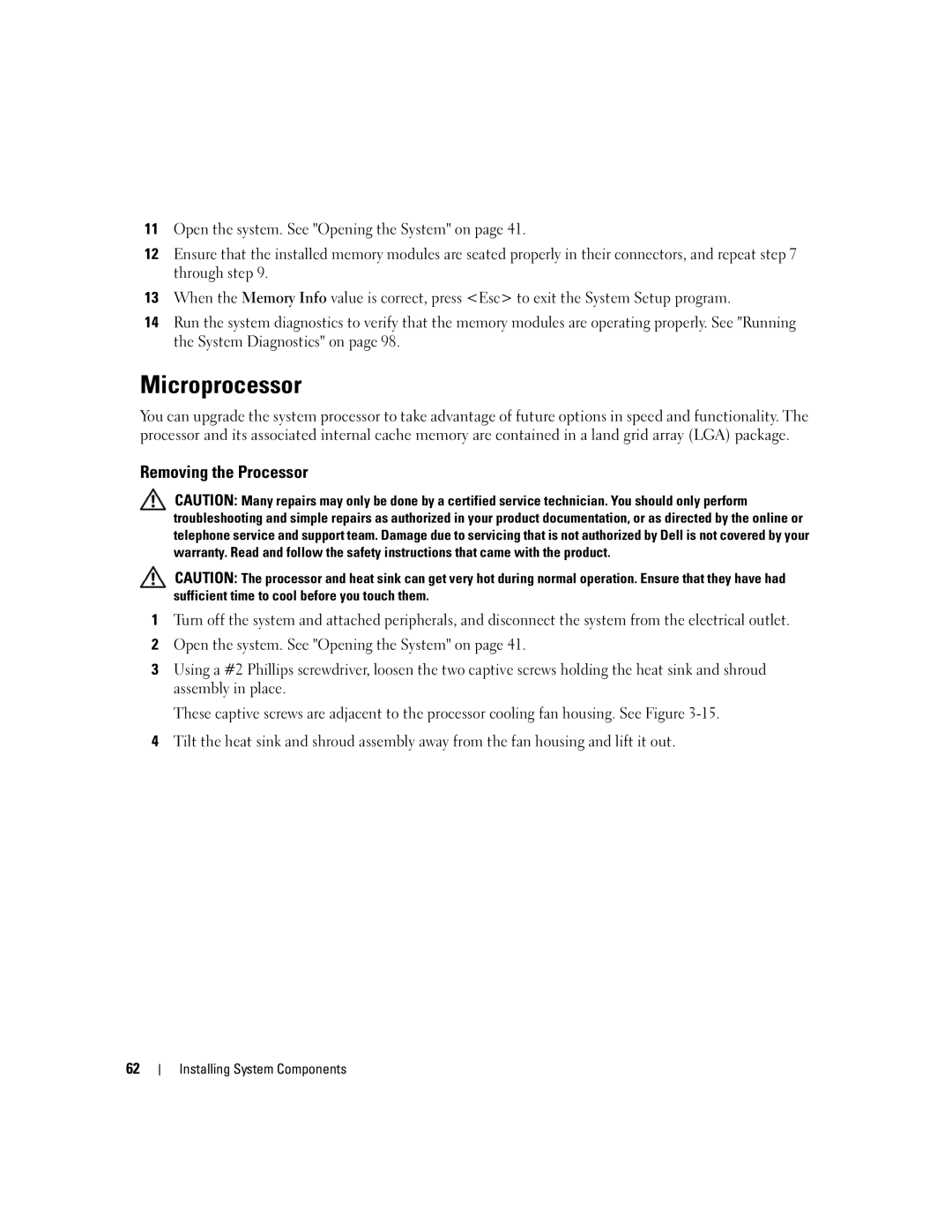11Open the system. See "Opening the System" on page 41.
12Ensure that the installed memory modules are seated properly in their connectors, and repeat step 7 through step 9.
13When the Memory Info value is correct, press <Esc> to exit the System Setup program.
14Run the system diagnostics to verify that the memory modules are operating properly. See "Running the System Diagnostics" on page 98.
Microprocessor
You can upgrade the system processor to take advantage of future options in speed and functionality. The processor and its associated internal cache memory are contained in a land grid array (LGA) package.
Removing the Processor
CAUTION: Many repairs may only be done by a certified service technician. You should only perform troubleshooting and simple repairs as authorized in your product documentation, or as directed by the online or telephone service and support team. Damage due to servicing that is not authorized by Dell is not covered by your warranty. Read and follow the safety instructions that came with the product.
CAUTION: The processor and heat sink can get very hot during normal operation. Ensure that they have had sufficient time to cool before you touch them.
1Turn off the system and attached peripherals, and disconnect the system from the electrical outlet.
2Open the system. See "Opening the System" on page 41.
3Using a #2 Phillips screwdriver, loosen the two captive screws holding the heat sink and shroud assembly in place.
These captive screws are adjacent to the processor cooling fan housing. See Figure
4Tilt the heat sink and shroud assembly away from the fan housing and lift it out.
62
